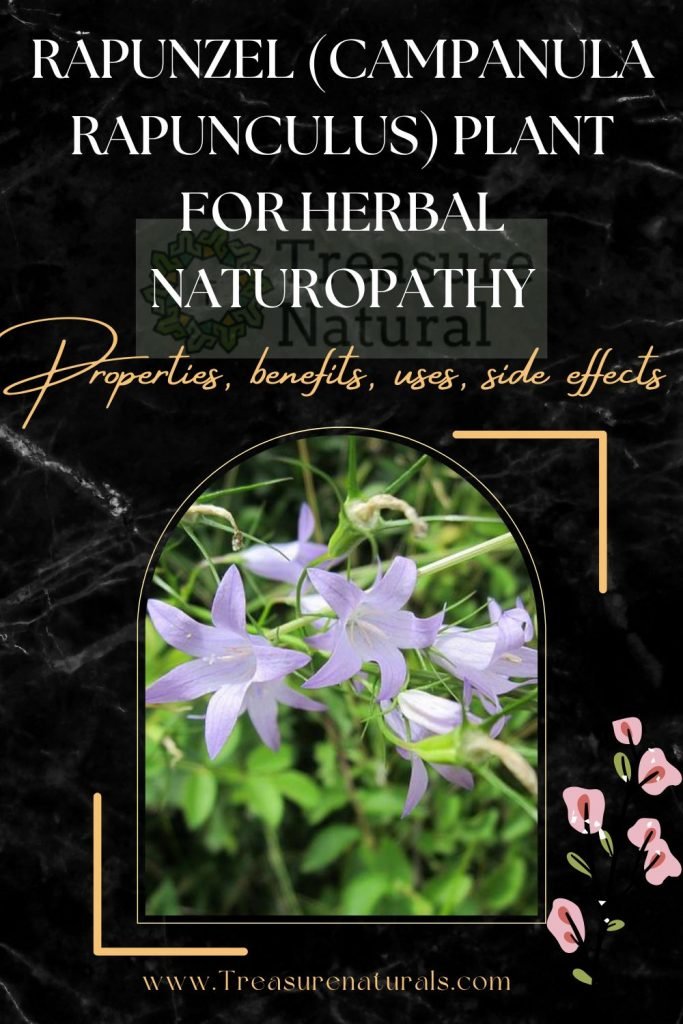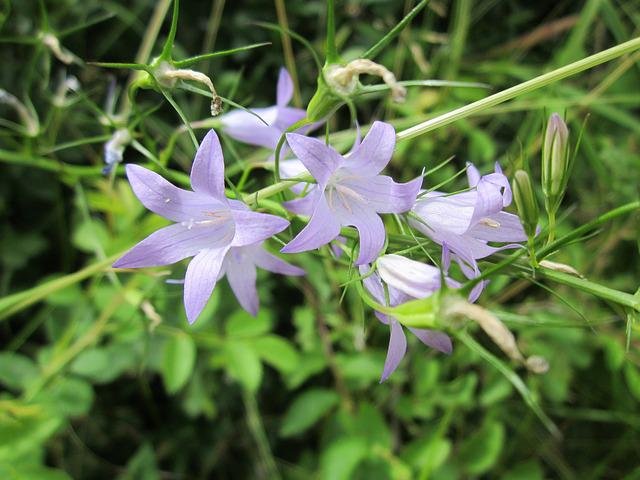
Rapunzel (Campanula rapunculus) is a plant belonging to the Campanulaceae family. Rich in vitamin C, it is useful for the immune system and excellent as an anti-inflammatory. Let’s find out better.
Properties of the Rapunzel
Rapunzel, scientific name Campanula rapunculus, is a bellflower with beautiful lilac flowers and spindle-shaped roots, useful both in the culinary and phytotherapeutic fields. The more correct common name would be “edible bellflower”.
Rapunzel is an important source of ascorbic acid, which together with a fair wealth of trace elements strengthens and supports the work of the immune system.
It is a renowned anti- inflammatory, particularly effective against canker sores, gingivitis and abscess principles. It is used as an invigorating, energizing and digestive. The good presence of vitamin C and proteins made it an excellent phytotherapeutic remedy in antiquity and in peasant life, especially in the mountains.
How to use
Internal: if we like the bitter taste, we can eat the leaves of the basal rosette, just blanched or in salads. The root can also be eaten in a thousand recipes. Chewing Rapunzel leaves helps maintain oral health.
External: by crushing or chopping the leaves, an excellent mixture is obtained to fight warts, thanks to its strong antimicrobial qualities. By soaking the leaves of Rapunzel you get a liquid containing mucilage of particular efficacy to soothe the pain caused by cold cracking of the hands.
Contraindications of Rapunzel
No particular contraindication is related to Rapunzel. It is a good idea to always make sure that the soil is in good condition and that there are no pollutants when using the hypogeal (underground) parts of the plants, as these agents are concentrated more in them.
The root is not very easy to clean and requires a lot of patience, therefore it is good to avoid eating clean roots too hastily as they are certainly full of soil residues.
Description of the plant
Unmistakable thanks to the flowering that invests the summer months with beautiful lilac pentafoliated calyxes, the Rapunzel is a low seedling, which rarely reaches ten centimeters. In addition to the basal rosette, it has lanceolate leaves along the stem, which is generally hairless.
The root tends to swell, making it deserve the name of “rapunzel” (from the Latin rapunculus) and making it gain the interest of animals and humans.
The basal rosettes are at the peak of their vigor in summer and in the post-summer period, while the root is ready to be harvested in winter. The flowers, in turn edible, can be harvested in spring, once fully open and able to make our mixed salads wonderful and unique.
Habitat of the Rapunzel
Rapunzel grows along almost the entire peninsula (excluding islands, therefore), preferring wooded environments, mountain ones and uncultivated fields. It can also be easily grown in home gardens. It can be found from southern Sweden to North Africa, and from England to Asia Minor and the Caucasus.
Background

Rapunzel has been used since ancient times and its use for phytotherapeutic purposes has been handed down from generation to generation thanks to popular wisdom.
Rapunzel, precisely “Rapunzel”, is a fairy tale based on the ancient Greek myth of Danae and on the Persian tale Rudaba.
In the past, Rapunzel oil, obtained by resting the roots of Rapunzel in the dark for many months, was considered a precious gift and a prized herbal remedy.






